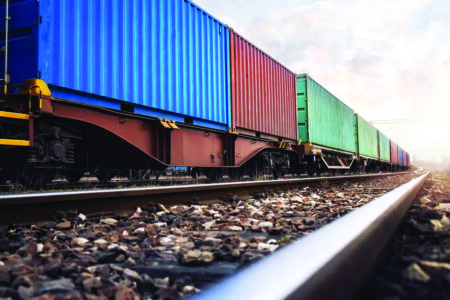This report explores India’s agricultural export potential and the significant food wastage challenges in the sector. It highlights current export strengths and examines preventive measures—like improved infrastructure and food processing—to boost competitiveness and sustainability.
Agriculture plays a crucial role in India’s economy, contributing approximately 16% to the national GDP and 12% to total exports. However, agricultural exports face several challenges, including conflicting domestic policies and higher prices, which often impact their global competitiveness. Despite these obstacles, India ranks as the tenth-largest exporter of agricultural products, with sugar, beef, rice, and shrimp among the primary exports. Indian exports of rice, wheat, cotton, and sugar have become increasingly competitive, yet they still fall short of matching global leaders in these commodities.
Expanding agricultural export potential
India’s agricultural exports have seen remarkable growth, increasing more than threefold over the past 15 years. The country has established itself as a top rice exporter and has made significant progress in non-traditional products such as fish, aquaculture, meat, milk, and dairy. This growth underscores India’s potential to further enhance its agricultural exports, particularly in high-demand items like horticultural crops. Exporting fruits, vegetables, and root crops can significantly contribute to economic growth and nutritional security, both domestically and for trade partners. However, India’s share in processed food exports remains limited at around 1.5 percent (approximately $3.2 billion), indicating a pressing need to improve food processing capabilities.
Challenges of food wastage in India
Despite promising figures, India’s agricultural sector faces significant losses, with an estimated 20-30 percent wastage throughout the supply chain due to inadequate infrastructure, outdated technology, and knowledge gaps. In 2014, post-harvest losses amounted to INR 926.51 billion (USD 15.19 billion), severely impacting food availability and producer income. For perishable goods such as fruits and vegetables, median loss rates can reach 10-15 percent, particularly in lower-income regions where supply chain management is insufficient. Factors such as poor storage, processing, and transportation contribute to this wastage. The COVID-19 pandemic further exposed these vulnerabilities, disrupting supply chains and increasing food wastage.
Preventive Measures
Several reforms are recommended to curb food wastage and enhance food security:
- Improving Infrastructure: Strengthening cold storage and transportation can minimise spoilage, especially for perishables.
- Leveraging Information Technology: IT solutions can help manage complexities in the agri-food supply chain, providing real-time updates to reduce wastage.
- Promoting Food Processing: Increasing the processing rate of food products could extend shelf life and improve market viability.
- Circular Economy Initiatives: Implementing reduction, reuse, and recycling principles can yield environmental benefits, such as utilising kitchen waste for biodiesel.
- Policy Support and Market Linkages: Stronger policies connecting farmers with industries can enhance supply chain profitability and efficiency.
The Path Forward for Sustainable Agricultural Growth
By addressing challenges related to food wastage and supply chain inefficiencies, India can bolster food security and strengthen economic resilience. Prioritizing improvements in infrastructure, technology, and food processing is essential for a sustainable and competitive agricultural sector.
Views and information by Apeksha Gupta, Head, VCJ Foundation and Trust. References: Krishnan, R., et al. (2020). https://doi.org/10.1016/j.jclepro.2019.118374, Chauhan, Y. (2020) https://doi.org/10.3390/SU12198162, Abalansa, S., et al. (2021) https://doi.org/10.3390/SU13095302, Agarwal, M., et al. (2021) https://doi.org/10.46830/wriwp.20.00106.








